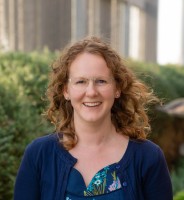They had the chance to explore that possibility through a Joint Research Initiative (JRI), an AXA Research Fund program that aims to foster collaboration between a team of academic researchers and a team of AXA experts to jointly address research questions. Led on the academic side by Dr. Christophe Josserand at the University Pierre and Marie Curie (UPMC), the project “Modelling the Flood Peril” aimed to develop new, high-performing technology that could one day provide flood forecasts and help everyone prepare.
Available models of flood risk that are currently used by (re)insurance companies have the advantage of being fast, but, in some contexts, their statistical approach may not be the most appropriate. What they are good at, and what is useful for the insurance business, is producing risk statistics based on modeling thousands of events that represent all kinds of potential flood-related phenomena for a given location. But they can’t provide simulations of actual events, they can’t provide simulations for flood forecasting and that leaves us underequipped to prepare for major floods. One reason for this shortcoming concerns the multiple factors these models are not able to capture—for example, if there is mud in the river under study. This is a big challenge for risk analysis, because the presence of mud can completely change a river’s flow or the impact a flood will have on affected houses.
Back to Basics with Advanced Techniques
With their expertise in fluid mechanics, Christophe Josserand’s research group hoped to create more comprehensive flood models by putting the fundamental physics of fluid mechanics back into the question. The field had gotten away from this, because of the challenge of the necessary calculations—specifically, in scaling up from a system you can describe in detail on the microscopic level, to achieve a description of the full flow of a river. “In the past, these calculations weren’t possible,” Dr. Josserand explains, “and, in the end, what matters most to hydrologists is the height of the top level of the river. The flux [or rate of flow per unit of area] is dependent on and can be deduced from this.” So, earlier flood modelers could satisfy themselves with this information. Times have changed, though, and both the needs of flood prediction and calculation methods have progressed. “AXA is asking us to solve the equation for the full Parisian basin. It’s too much for the old methods.” The researchers thus adapted their existing model, incorporating advanced numerical calculation methods, to produce a tool that is able to take into account more parameters than ever before. River mud is but one example; things like rainfall and ground infiltration play a role, too. The researchers have also added a very accurate database of soil and flood defense information (walls along rivers, dikes, etc.) to their model, in contrast to today’s approaches that can only make assumptions about this information.
The ability to model dynamic behavior is particularly relevant for flash floods, a phenomenon that is very difficult for current models to handle. The JRI team tested their method on realistic cases, like the 2016 Carlisle floods in the UK. Their results showed that, with information on the weather and the hydraulic states of the waterways, Dr. Josserand’s model would indeed have succeeded at predicting the risks involved. Tests following a flash flood in Cannes (France) showed that, although not fast, compared to statistical models, the Josserand team’s solution performed very accurately. For AXA’s Florent Lobligeois, this represents a big improvement for business and a good compromise between their operational needs and the complexity of the model.
All together, this makes the new AXA JRI model a truly novel tool that complements existing models in flood prediction. It is able to model historical flooding events—important for insurers and citizens alike, as the impact today of similar events would be much greater—and to map out worst-case scenarios for future floods.
More Physics in Flood Modeling’s Future
AXA’s natural disaster experts, Déroche and Lobligeois, expect this powerful tool to become widespread in their industry in five years’ time. Market models in the area of natural disaster risk assessment are moving toward such physics-based methods, as is already the case for wind modeling. With its results, the JRI project is well positioned to prove that a return to flood models based heavily on fluid dynamics is achievable and likely to have benefits for the field. Describing complex systems with detailed calculations is now possible with numerical methods, making the goal to “untangle [today’s empirical solutions] from a more fundamental, theoretical approach,” Josserand says.
The researchers are helping to spread this message by posting preprints of their publications to the open access server arXiv.org, and making their model’s code free to use. Sharing their code with the community also ensures its quality, as others who use it can submit corrections. Videos of their flood simulations are available on YouTube, and JRI team member Dr. Geoffroy Kirstetter has been invited to create a class on the new methods of numerical flood risk modeling, at the engineering school of the University of Nice–Sophia Antipolis.
Recently, the academic team organized a conference that was particularly successful for bringing together different disciplines working on related topics around a single theme—floods—but who do not usually interact: physicists, mathematicians, hydrologists…and members of industry, as well.Some of these experts were other current and former AXA grantees working on relevant flood topics, connected to the JRI team’s community by the AXA Research Fund.
Summing up the experience, Christophe Josserand reports that his team accomplished things they would not have undertaken without AXA’s partnership, and the collaboration helped them see what the industry users of their models really need. “I have to thank AXA,” he says. “It was a bit risky what they let us try, since we’re not hydrologists, but we were able to go back to the beginning of these models and rebuild them from the start.” From the company’s point of view, numerous discussions with the research team allowed the JRI participants to have an impact on the project design, targeting it to meet their practical needs for a fast, high resolution, business-relevant model. The experience was eye-opening at times: “Working in an operational setting, you don’t believe you need research – it’s too long-term,” explains Dr. Lobligeois from AXA. The JRI offered both sides the opportunity to explore and define solutions that would strike the right balance.
Discover research projects related to the topic
Sustainable Living & City
Climate Change
Climate Adaptation & Resilience
Urban Planning
Resilient Infrastructure & Safety
Environmental Justice
Post-Doctoral Fellowship
Australia
2023.06.20
Indicators for Climate Resilient City Planning
Expected start date:June-2023 Cities contribute enormously to global greenhouse emissions and are key drivers of climate change. By the same... Read more

Melanie
LOWE


